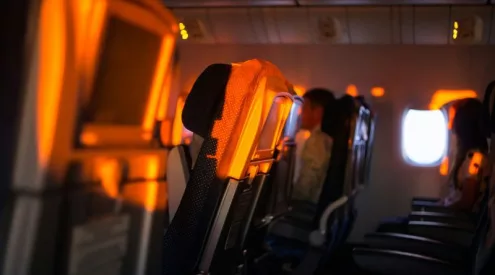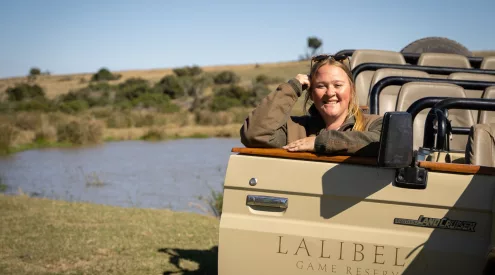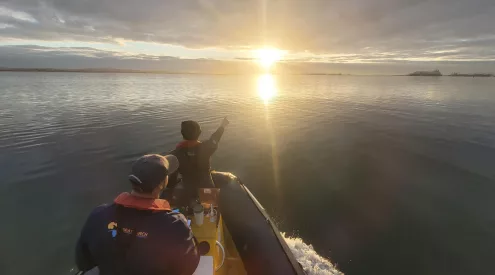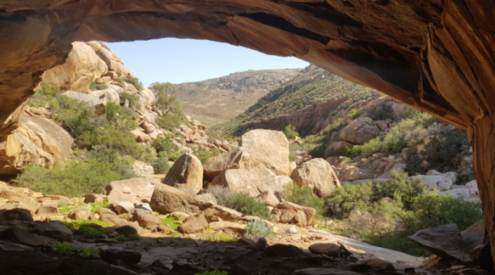Seven white rhinos and two hyenas welcomed me to Hluhluwe-Imfolozi Game Reserve in northern Kwa-Zulu Natal. It’s great to be back in the bush!
As much as I’ve enjoyed the landscapes of uKhahlamba Drakensberg, with their towering peaks and endless vistas, I’ve really missed the smells, sounds and sights of ‘real’ Africa. And as I drove into the reserve just before sunset, I came across two hyenas which were setting off on their nocturnal hunt (they were too quick for my camera!). Then a few minutes later, seven white rhinos were grazing in the grass just a few metres from my car. Wow!
Imfolozi is the start of my sojourn into the classic wildlife areas of South Africa. From here I make my way north, through the adjacent Hluhluwe Game Reserve, then iSimangaliso Wetland Park (formerly St Lucia), then Tembe Elephant Reserve, and Ndumo on the border of Mozambique. Then to the great Kruger National Park, and after that to Mapungubwe National Park on the border of Zimbabwe.
All of these places contain some of the last truly wild animals in our country. It’s a pilgrimage of sort for me. I’m fascinated by the spontaneity and serendipity of wildlife, the chance encounters that aren’t scripted or planned. Wild animals are endlessly fascinating to me. They’re beautiful of course, and to me, they’re infinitely more interesting than any man-made thing. But in their wildness, they’re also utterly themselves, and completely attuned to their environment.

Sunset at Hluhluwe-Imfolozi Game Reserve
Imfolozi is South Africa’s oldest game reserve, declared in 1897, and so holds a special place in the country’s heritage. At the time, colonial authorities believed the white rhino to be extinct (thanks to hunting), and on discovery of several of these rare creatures at the confluence of the White and Black Umfolozi Rivers, they formalized the protection of the area.
Over the next few decades, the rhinos recovered to about 600 in number, and in 1960 every wild white rhino in the world lived in Imfolozi and the adjacent Hluhluwe Game Reserve. Over the next 30 years, under the leadership of Dr Ian Player, the Natal Parks Board moved more than 3 000 white rhino to other areas of Africa and the world, spreading the gene pool and securing the future of a creature which has roamed the earth for more than 40 million years, the longest of any present-day land mammal. (Read the interview I did with Dr Player in 2010).
Today, the magnificent rhino is under attack again, this time from poaching syndicates who supply Vietnamese and Chinese consumers with rhino horn, in the blatantly mistaken belief that it can cure a range of illnesses. Rhino horn is currently worth more than gold, because of the huge demand created in the east. I was last in Mfolozi in 2010, doing an article for Wild Magazine on veterinarian Dr Dave Cooper and the team at the Game Capture Unit. I won’t ever forget that experience. We discovered several dead rhinos, all killed for their horns – you can read the article here. So it was super to see the seven white rhino alongside the road today.
At the end of this week I am doing the Imfolozi Wilderness Trail, the first of its kind in the country. Started by Ian Player and Magqubu Ntombela in March 1959, hikers are led by experienced rangers on a five-day, four-night hike in the remote wilderness section of the game reserve. No cell phones, no wrist watches, no gadgets are allowed. The whole idea is to immerse oneself in Africa’s wildness, emerging at the end with a renewed sense of what’s truly important in life. Participants sleep out under the stars around a small fire, and everyone has a turn to keep watch during the night, to ensure that wild animals – including lion, elephant, buffalo and rhino – don’t get too close. It’s one of Africa’s quintessential experiences, perhaps one of THE most quintessential experiences, and I can’t wait to do it. What a privilege it is to be here.

Zebra at Hluhluwe-Imfolozi Game Reserve
I am staying at Mpila Camp tonight, a beautiful camp on top of a hill that overlooks the surrounding valleys. There are no fences, and animals move through the camp. This was the notice in the chalet (!): “At night, be aware of movements in your surroundings, stand with your back to the light, so you can see into the darkness beyond. Be especially vigilant if you have kids as hyena could potentially snatch up a small child that is on his/her own. If you leave children inside, make sure the doors are closed so that hyenas cannot get in. Please note that we are not trying to scare you, but your safety is important to us…”
I thought I’d end off my blog with some words from Dr Ian Player, who wrote this about Imfolozi: ‘The land had a mood that in this fading May afternoon transported me into a realm of the mind and body much deeper that I had ever experienced. The chanting goshawk called from a dense patch of bush, trumpeter hornbills flapped overhead with their characteristic one-two-three flight. A bushbuck barked in the distance, and a grey duiker bounded across in front of us, diving and weaving through the bush. Words could not describe the poetry of this ancient land. What I was connected to was the spirit of the place, all life past and present intermingling at different levels and forming an intangible bond with the hard earth beneath my feet.’
For more on my year in the wild, go to www.yearinthewild.com and www.facebook.com/yearinthewild. Thanks again to my sponsors for making it all possible. CapeNature, South African National Parks, Ezemvelo KZN Wildlife, Eastern Cape Parks, iSimangaliso Wetland Park, Ford, Total, Evosat, Conqueror Trailers, Vodacom, Digicape, Lacie, Frontrunner, Safari Centre Cape Town, K-Way, EeziAwn, National Luna, Nokia , Garmin, Goodyear, Global Fleet Sales, Hetzner, Clearstream Consulting, Escape Gear and Trailcam Adventures.

















